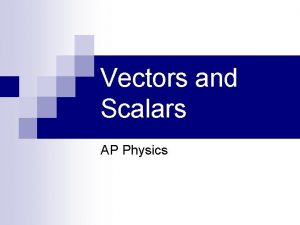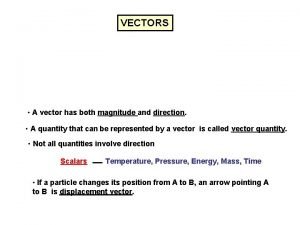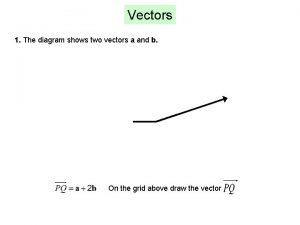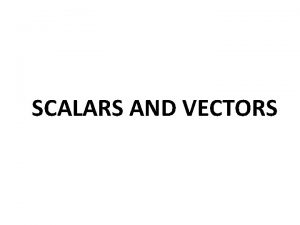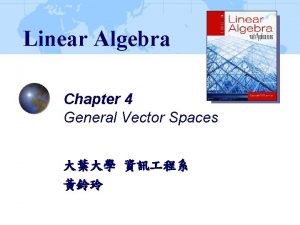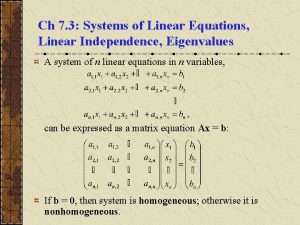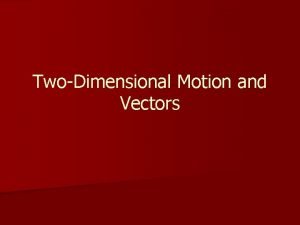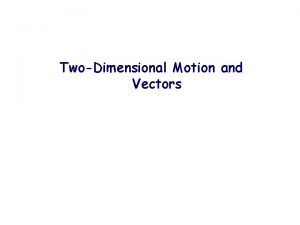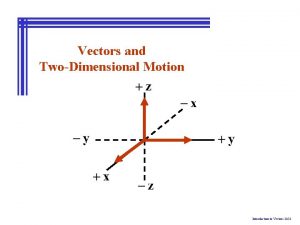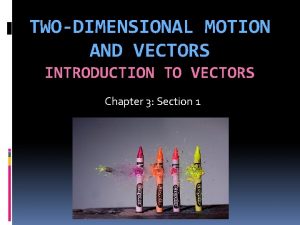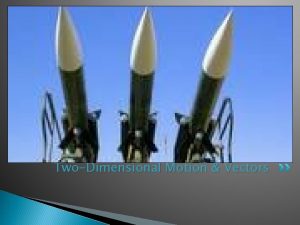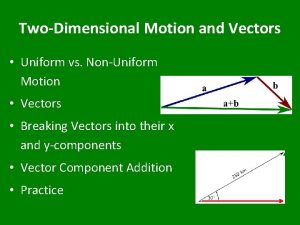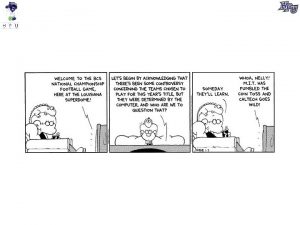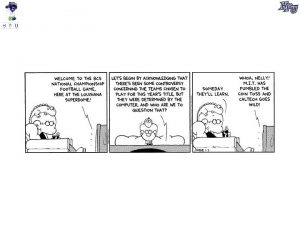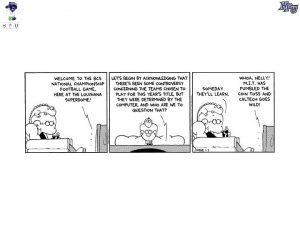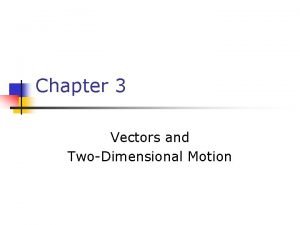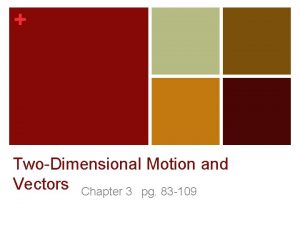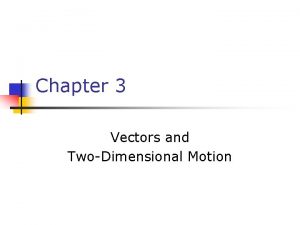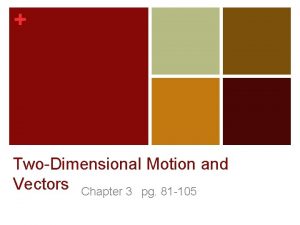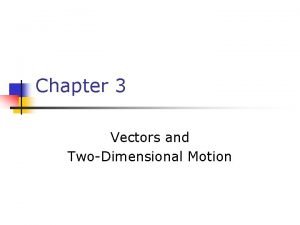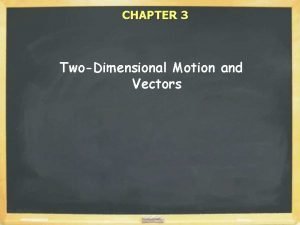Vectors and TwoDimensional Motion 3 1 VECTORS AND





















- Slides: 21

Vectors and Two-Dimensional Motion

3. 1. VECTORS AND THEIR PROPERTIES � Definition A vector quantity has both magnitude and direction.

3. 1. VECTORS AND THEIR PROPERTIES � Equality of Two Vectors Two vectors A and B are equal if they have the same magnitude and the same direction. This property allows us to translate a vector parallel to itself in a diagram without affecting the vector. These four vectors are equal because they have equal lengths and point in the same direction.

� Negative of a Vector. The negative of the vector A is defined as the vector that gives zero when added to A. This means that A and -A have the same magnitude but opposite directions.

�Adding Vectors When two vectors are added, their sum is independent of the order of the addition: A+B=B+C. This relationship can be seen from the geometric construction in figure, and is called the commutative law of addition. In this construction, the resultant R is the diagonal of a parallelogram having sides A and B. (b) This construction shows that A+B=B- A (in other words, that vector addition is commutative)

�The Associative Law of Addition When three or more vectors are added, their sum is independent of the way in which the individual vectors are grouped together. A geometric proof of this rule for three vectors is given in figure. This is called the associative law of addition:

�Subtracting Vectors Vector subtraction makes use of the definition of the negative of a vector. We define the operation A -B as the vector -B added to the vector


3. 2 COMPONENTS OF A VECTOR

�Unit Vectors Vector quantities often are expressed in terms of unit vectors. A unit vector is a dimensionless vector having a magnitude of exactly 1.

PROBLEMS

Motion in Two Dimensions THE DISPLACEMENT, VELOCITY, AND ACCELERATION VECTORS the average velocity of a particle during the time interval t as the displacement of the particle divided by that time interval.


PROJECTILE MOTION

PROJECTILE MOTION

Horizontal Range and Maximum Height of a Projectile

Problem of Kinematics � Romeo melempar kerikil dengan pelan ke jendela Juliet, dan ia ingin agar kerikil tersebut mengenai jendela hanya dengan komponen kecepatan horisontal. Ia berdiri di sisi taman mawar 8, 0 m di bawah jendela Juliet dan 9, 0 m dari dinding. Berapa kecepatan kerikil ketika mengenai jendela?

PROBLEMS

Problem of Kinematics A stone is thrown from the top of a building upward at an angle of 30. 0° to the horizontal and with an initial speed of 20. 0 m/s, as shown in figure. If the height of the building is 45. 0 m, how long is it before the stone hits the ground?

Example 4. 7. The End of the Ski Jump. A ski jumper leaves the ski track moving in the horizontal direction with a speed 25. 0 m/s, as shown in figure. The landing incline below him falls off with a slope 35. 00. Where does he land on the incline.

Problem of Kinematics � A man is riding on a flatcar traveling at a constant speed of 9. 10 m/s (Fas shown in figure). He wishes to throw a ball through a stationary hoop 4. 90 m above the height of his hands in such a manner that the ball will move horizontally as it passes through the hoop. He throws the ball with a speed of 10. 8 m/s with respect to himself. (a) What must the vertical component of the initial velocity of the ball be? (b) How many seconds after he releases the ball will it pass through the hoop? (c) At what horizontal distance in front of the hoop must he release the ball? (d) When the ball leaves the man's hands, what is the direction of its velocity relative to the frame of reference of the flatcar? Relative to the frame of reference of an observer standing on the ground?
 Sin 37°
Sin 37° Passive and active rom
Passive and active rom Simple harmonic motion formula
Simple harmonic motion formula An object in motion stays in motion
An object in motion stays in motion Chapter 2 motion section 1 describing motion answer key
Chapter 2 motion section 1 describing motion answer key The main difference between speed and velocity involves
The main difference between speed and velocity involves Chapter 2 section 1 describing motion answer key
Chapter 2 section 1 describing motion answer key Section 1 describing motion
Section 1 describing motion Section 1 describing motion
Section 1 describing motion Big ed mona multimodal text
Big ed mona multimodal text Vector addition properties
Vector addition properties Vectors and scalars in physics
Vectors and scalars in physics What are i and j in vectors
What are i and j in vectors Vector components
Vector components A vector has both magnitude and
A vector has both magnitude and The diagram shows a parallelogram
The diagram shows a parallelogram Vector and scalar similarities
Vector and scalar similarities Entropy is scalar or vector
Entropy is scalar or vector General vector
General vector Linearly dependent and independent vectors
Linearly dependent and independent vectors Vectors and the geometry of space
Vectors and the geometry of space What is a linear transformation linear algebra
What is a linear transformation linear algebra












